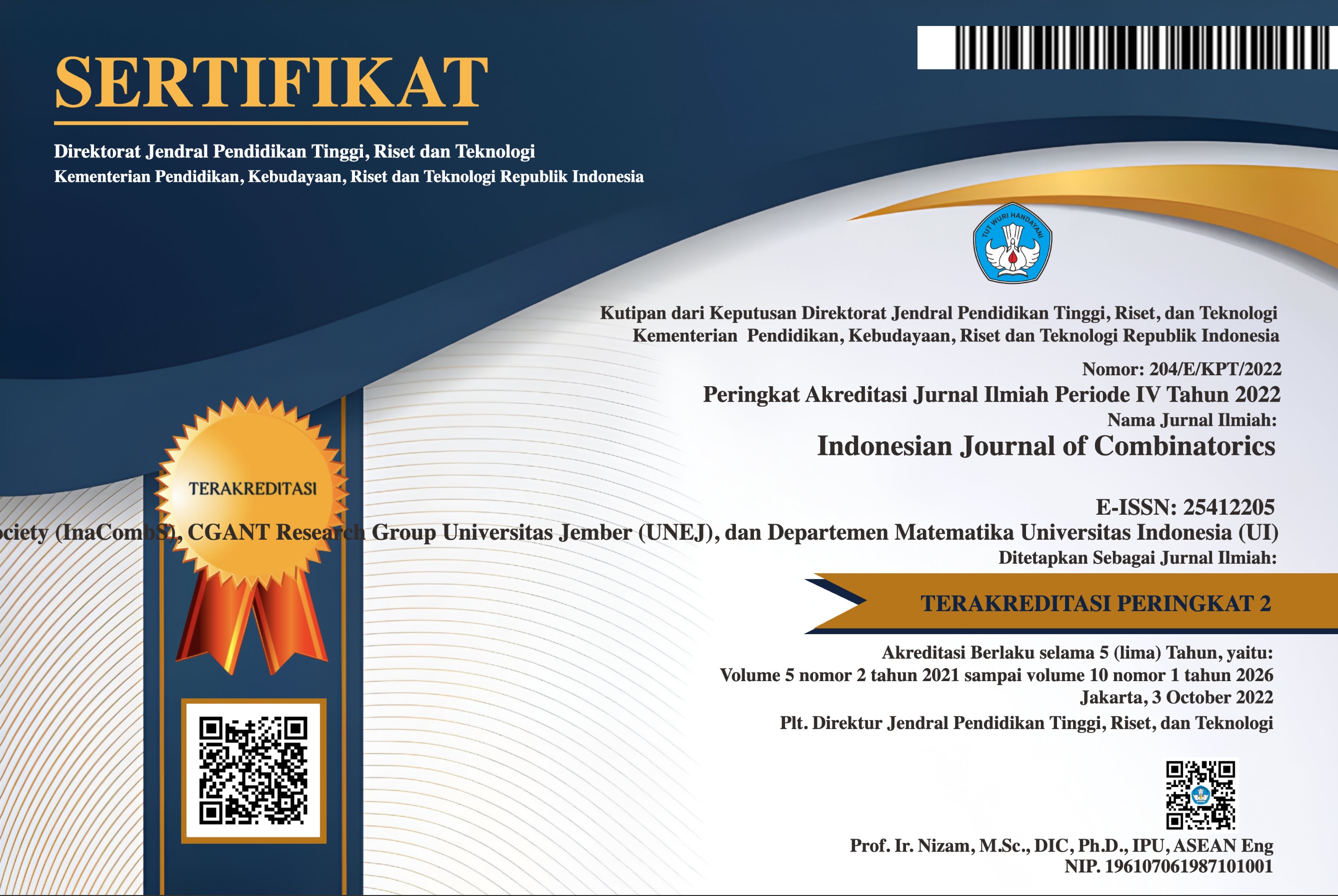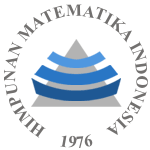The degree sequences of a graph with restrictions
Abstract
Two finite sequences s1 and s2 of nonnegative integers are called bigraphical if there exists a bipartite graph G with partite sets V1 and V2 such that s1 and s2 are the degrees in G of the vertices in V1 and V2, respectively. In this paper, we introduce the concept of 1-graphical sequences and present a necessary and sufficient condition for a sequence to be 1-graphical in terms of bigraphical sequences.
Full Text:
PDFDOI: http://dx.doi.org/10.19184/ijc.2021.5.2.2
References
G. Chartrand and L. Lesniak, Graphs & Digraphs 3th ed. CRC Press (1996).
D. Gale, A theorem on flows in networks, Pacific J. Math. 7 (2), (1957), 1073--1082.
S. Hakimi, On the realizability of a set of integers as degrees of the vertices of a graph, J. SIAM Appl. Math. 10 (1962), 496-–506.
V. Havel, A remark on the existence of finite graphs (Czech), Casopis Pest. Math. 80 (1955), 477--480.
S. C. Lopez and F. A Muntaner-Batle, Mirror bipartite graphs, preprint, 2013. Available at ´
https://ui.adsabs.harvard.edu/abs/2013arXiv1305.5145L/abstract.
H. J. Ryser, Combinatorial properties of matrices of zeros and ones, Can. J. Math. 9 (1957), 371--377.
O. Veblen, An application of modular equations in analysis situs, Math. Ann. 14 (1912–1913), 86--94.
Refbacks
- There are currently no refbacks.

This work is licensed under a Creative Commons Attribution-ShareAlike 4.0 International License.












